February 21, 2014
South Korea – From Bathhouses to Innovative Beauty Products
February 21, 2014
South Korea – From Bathhouses to Innovative Beauty Products
If you’re a local Los Angeleno, you’re probably familiar with the ginormous Olympic Spa on Olympic Boulevard in K-town.
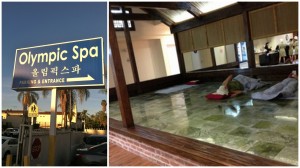
The Olympic Spa in K-Town, Los Angeles
Korean spas or bathhouses are a huge part of the Korean culture and beauty routine. In Korea, most bathhouses (jjimjilbangs) are a popular place for friends and families to gather, similar to what was done in ancient Korea when most homes didn’t contain private bathing facilities. Today, Korean spas are where ancient bathhouse traditions and modern spa cultures collide. The spas contain themed mineral saunas that contain natural elements (each with their own wellness properties) used in traditional Korean medicine, including traditional Korean body scrubs, massages, and other facial and body treatments. We highly recommend the signature body scrubs – once you see the visible gray lumps of dead skin cells being sloughed off your body, you’ll be coming back for more!
As seen in a recent NYT article, South Korea continues to be the leading import of the latest beauty trends. They are the #1 holder of patents related to skin care products and technology (bye bye, France).
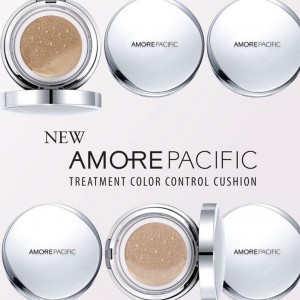
Amore Pacific, South Korea’s largest cosmetics company, capturing 40% of the country’s market share.
South Korea is at the forefront of innovative beauty products, giving us BB, CC and DD creams, tissue masks, oil cleansers, and a host of skin lightening products. According to the New Zealand Trade and Enterprise’s global market profile of 2012, South Korea is the 12th largest cosmetics producer in the world, with beauty powerhouses like Amore Pacific (who owns 40% of the Korean market share), O HUI (produced by electronics brand LG), Skin Food, IPKN, The Face Shop, to name a few.
So what’s behind Korea’s national obsession with beauty? How did South Korea outpace other countries in beauty innovation?
In a society that values how a person looks just as much as the substance of their academic achievements and personality, first impressions are vital. With good looks, Korean society believes that beauty leads to landing better jobs, attracting a better-looking partner, which leads to a better lifestyle. According to journalist Mike Breen, the author of non-fiction book, The Koreans, “Koreans generally are not shy about commenting on appearance, and job-hiring is often based on superficial criteria, so people here are very, very conscious of how they look.“
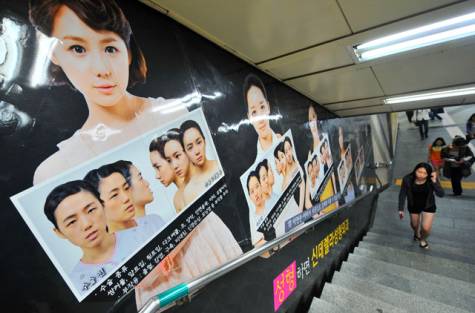
During a standard 10-minute commute, subway commuters in Seoul can easily be exposed to at least 10-20 cosmetic surgery clinic ads like these.
Compared to the average American woman, who uses about 12 personal care and beauty products, Korean women use an average of 18 products. According to the ISAS (International Society of Aesthetic Plastic Surgery), South Korea is also the world’s largest market for plastic surgery, with 1 in 5 Seoul women between the ages of 19-49 having gone under the knife. In the affluent Gangnam district (yep, it’s the same one described in PSY’s hit song), there are over 500 plastic surgery clinics alone.
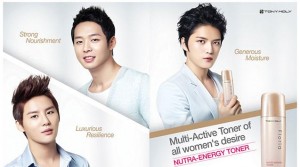
A mens makeup and skincare ad from Korean brand, Tony Moly
And it’s not just Korean women who are avid beauty enthusiasts. In 2011, South Korean men spent roughly $493 million on skincare. This massive figure accounted for almost 21% of global sales that year. Of the approximate male population of 19 million men in South Korea, it is estimated that at least 1 in 10 wear make-up and this number is likely to increase. BB creams and anti-aging products are the most popular beauty products sold to men.
Due to their manufacturing history, South Korean beauty manufacturers often are able to produce products cheaper and more quickly than their Western counterparts. There is also little-to-no red tape when it comes to using exotic ingredients like snail extract, starfish extract, herbs indigenous to the Asian region, unique floral extracts, yeast extracts and fruit stem cells.
Skin care is the dominant category in South Korea. Regardless of age and income levels, proper skin care routing often involves double skin cleansing and a regular regimen of facials, weekly treatments and hydrating masks.
The latest South Korean beauty trends to hit stateside (or will soon hit) include the following:
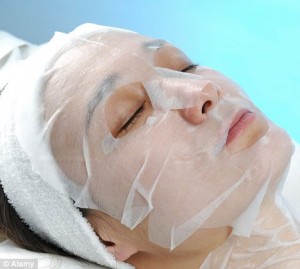
Look for Korean sheet masks coming soon to the U.S.!
- Sheet masks: Sheet masks are thin cotton sheets soaked in a treatment essence designed to target particular skin problems, and are an affordable alternative to frequent spa facials.
- Cleansing Oils: Oil cleansers are designed to gently remove makeup. Koreans often “pre-cleanse” using oil cleansers before using a foaming cleanser.
- Facial Toner: Asian toners aren’t like the Western kinds with astringent properties. Koreans use serum-like toners to add moisture back to the skin after the cleansing process.
- Skin Brightening and Whitening products: Brightening products are designed to address discolorations and key signs of aging. In addition to brightening skin tone, these products promise to fade away discolorations, diffuse freckles and create youthful, radiant skin.
Helena Rubenstein decreed that “There are no ugly women, only lazy ones.“
Guess we need to set that alarm clock earlier in the morning?

